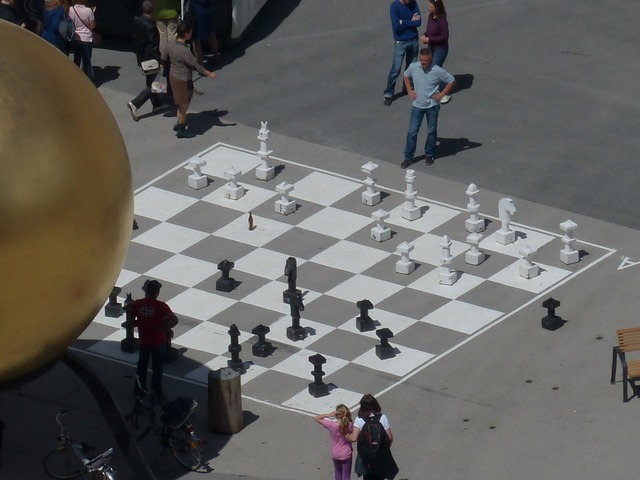CISL is proud to have taught intensive Cambridge FCE and CAE exam preparation classes for the last 25 years (and is equally proud to be a Cambridge Testing Centre)! Would you like some Cambridge FCE and CAE Speaking Part II vocabulary and tips? Read on for some of our expertise!
Cambridge FCE and CAE Speaking Part II Vocabulary and Tips

Overview: Cambridge FCE and CAE Speaking Part II
In Part I, students speak about themselves for one minute (read our CAE and FCE Speaking Part I tips here).
In Part II, the focus turns to a visual prompt. Here’s how it works:
- The students are given a piece of paper with photos (two photos for FCE and three photos for CAE)
- Student A is given a task: to answer questions about the photos in one minute. The questions the student has to answer about the photographs are written at the top of the page in case the student forgets.
- Part of this task is NOT to describe the photos: questions about about what the people in the photos might be feeling/thinking, etc. This is to test the student’s ability to speak on their own (without a partner) about something: it is testing the student’s use of language for comparing, describing, expressing opinions, and speculating.
- Student A has one minute to speak about the photos.
- Student B is then asked a question about the photos and has 30 seconds to respond.
- The students are given new photos and now it’s Student B’s turn to speak for one minute.
- After, Student A speaks for 30 seconds about the photos.
Example FCE Speaking Part 2
With the FCE Speaking Part 2, students are given two photos.


Interlocutor: In this part of the test, I’m going to give you each two photographs. I’d like you to talk about your photographs on your own for about a minute, and also to answer a question about your partner’s photographs.
Student A, here are your photographs. They show people who are playing a board game in different situations. I’d like you to compare these photographs, and say how different the motives for the players might be different in each situation.
All right?
(Student A speaks for one minute.)
Student B, do you enjoy participating in competitions? Why or why not?
(Student B speaks for 30 seconds.)
Example CAE Speaking Part 2
With the CAE Speaking Part 2, students are given three photos.



Interlocutor: In this part of the test, I’m going to give you each two photographs. I’d like you to talk about your photographs on your own for about a minute, and also to answer a question about your partner’s photographs.
Student A, here are your photographs. They show people who are playing a board game in different situations. I’d like you to compare two photographs and say how different the motives for the players might be different in each situation.
All right?
(Student A speaks for one minute.)
Student B, in which situation do you think the players feel the most pressure? Why?
(Student B speaks for 30 seconds.)
Useful Vocabulary: Cambridge FCE and CAE Speaking Part II
Because students are being tested on comparing, describing, expressing opinions, and speculating, it is important that students know the language related to these concepts.
Comparing
We can use the following words for comparing two photos that are similar:
- as
- as well as
- both
- have in common
- in the same way
- like
- more (adjective) than
- the most (adjective)
- similar
- similarly
- same
- the same as
We can use the following words for comparing two photos that are different:
- although
- but
- contrary to
- even though
- differ
- however
- instead
- on the contrary
- on the other hand
- the reverse
- unless
- unlike
- whereas
- while
- yet
Describing
Use the Simple Present and Present Continuous to talk about what is happening in the photos. If you don’t know the vocabulary words, check out our article What How to Answer an IELTS, TOEFL, or Cambridge Question When You Don’t Understand a Vocabulary Word.
Expressing opinions
- My initial reaction is …
- I (really) think that …
- I believe (that) …
- I’m sure that …
- In my opinion / My opinion is …
- For me/ From my point of view, …
- Frankly, …
- I do believe/ feel/think …
- I tend to think that …
- It seems clear to me that …
- To the best of my knowledge, …
- What I think is …
- It would seem to me that …
- I can’t help thinking that …
- I think it’s fair/reasonable to say …
- I’ve come the conclusion that …
Speculating
- You could say …
- I reckon/suppose …
- It could/might well be that …
- It could be said that …
- My best guess is …
- It’s possible that …
- Perhaps
Tips: Cambridge FCE and CAE Speaking Part II
CISL is a Cambridge Testing Centre and has been providing successful FCE and CAE testing to students for over 25 years. Here are some of our tips for mastering Part 2 of the Cambridge Speaking Module!
- Speak for the entire time you are given. Students sometimes become nervous and do not use the full minute or 30 seconds.
- Practice timing yourself by giving yourself impromptu one minute speeches. In time, you will gain a “feel” for how long one minute is and how long 30 seconds is.
- Remember to fully answer the questions. If you forget what they are, do not worry: they are written on the paper for you.
- View more tips (and see another Part 2 practice test) in our previous article about Cambridge FCE and CAE Part 2 Tips. You can view the tips here:
